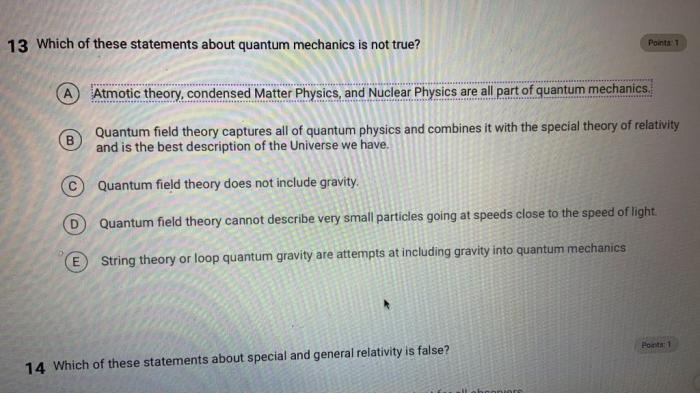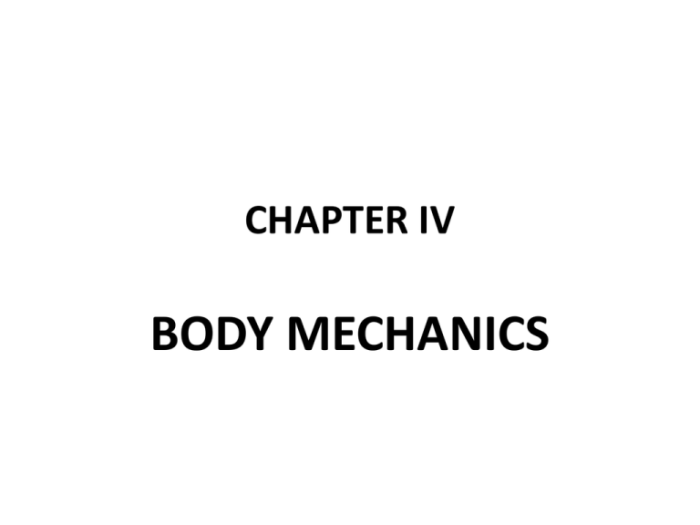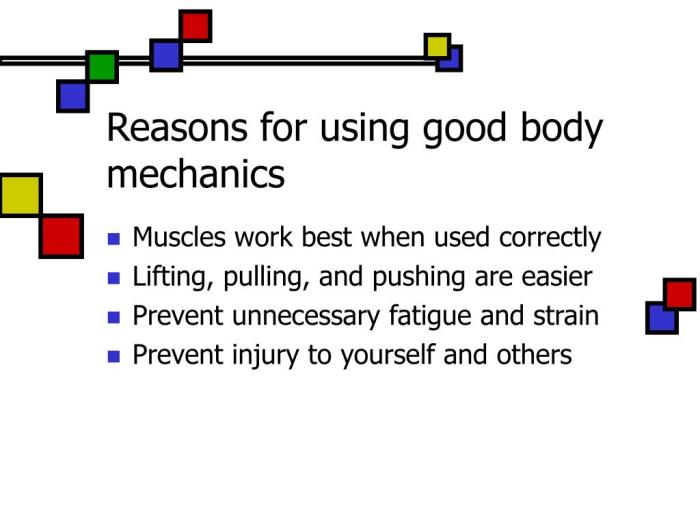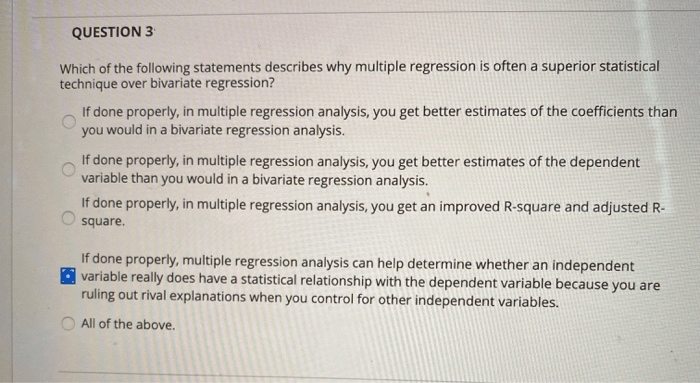Which of these statements describes good body mechanics? Good body mechanics are essential for maintaining a healthy and active lifestyle. Understanding the principles of good body mechanics can help reduce pain, improve posture, and prevent injuries. This article will discuss the definition, principles, benefits, and common mistakes of body mechanics, as well as provide a step-by-step guide for improving body mechanics in various situations.
Definition of Good Body Mechanics

Body mechanics refers to the way we use our bodies to move and perform everyday activities. Good body mechanics involves maintaining proper posture, balance, and movement patterns to minimize strain and injury. It is essential for overall health, well-being, and preventing musculoskeletal problems.
Principles of Good Body Mechanics: Which Of These Statements Describes Good Body Mechanics

Proper Body Alignment
Proper body alignment involves maintaining a neutral spine, with the head, shoulders, and hips aligned. This alignment helps distribute weight evenly and reduces strain on muscles and joints.
Neutral Spine
A neutral spine is a straight line from the base of the skull to the tailbone. Maintaining a neutral spine helps prevent back pain, neck pain, and other musculoskeletal issues.
Proper Body Weight Distribution
Proper body weight distribution involves balancing weight evenly on both feet and avoiding putting excessive weight on one side of the body. This helps prevent muscle imbalances and joint pain.
Benefits of Good Body Mechanics

Reduced Pain
Good body mechanics helps reduce pain by minimizing strain on muscles and joints. It can alleviate back pain, neck pain, and other musculoskeletal issues.
Improved Posture
Proper body mechanics helps improve posture by maintaining a neutral spine and proper alignment. This can enhance self-confidence and reduce the risk of developing posture-related problems.
Injury Prevention
Good body mechanics helps prevent injuries by reducing strain and stress on the body. It can minimize the risk of sprains, strains, and other musculoskeletal injuries.
Common Mistakes in Body Mechanics

Slouching
Slouching is a common mistake that can lead to back pain, neck pain, and other musculoskeletal issues. It occurs when the spine is curved forward and the shoulders are rounded.
Lifting Heavy Objects Incorrectly, Which of these statements describes good body mechanics
Lifting heavy objects incorrectly can strain the back and lead to injuries. It is important to lift with the legs, keep the back straight, and avoid twisting.
Straining Muscles
Straining muscles occurs when they are stretched or used beyond their capacity. It can lead to pain, stiffness, and reduced mobility.
Helpful Answers
What is the most important principle of good body mechanics?
Maintaining a neutral spine is the most important principle of good body mechanics. A neutral spine is one that is in a straight line from the head to the tailbone, with the natural curves of the spine maintained.
What are some common mistakes in body mechanics?
Some common mistakes in body mechanics include slouching, lifting heavy objects incorrectly, and straining muscles. These mistakes can lead to pain, injuries, and long-term health problems.
How can I improve my body mechanics?
There are many ways to improve body mechanics, including practicing good posture, lifting objects correctly, and exercising regularly. There are also many resources available, such as books, websites, and classes, that can help you learn more about body mechanics.